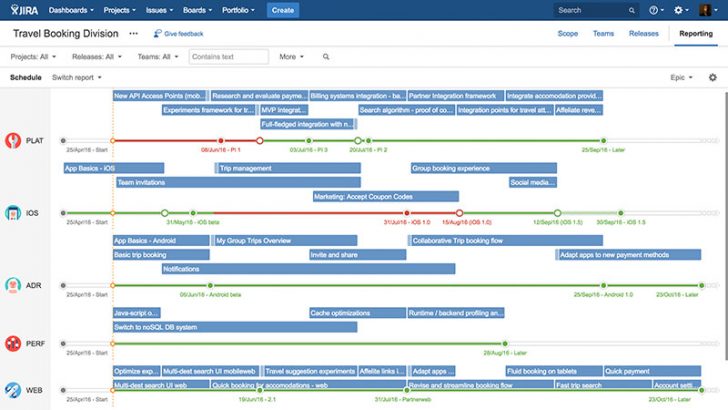
Atlassian Software has announced that Portfolio for Jira 2.0 is now available. The news will be welcomed by project managers who can now do real-time planning across multiple projects and teams at a glance.
According to the press release: “Portfolio for JIRA 2.0 has arrived, featuring a new integration with JIRA Software – redesigned from the ground up. By loading data dynamically from JIRA Software, you can plan in real time and everything will always be up to date.”
One of the challenges for development teams wanting to move to an Agile approach is visibility. With Agile, teams adopt a continuous approach to development, delivery, integration, testing and deployment. That increase in speed, especially where projects need to be integrated into larger software streams means that a real-time view of what is happening is critical.
Easy integration with Jira
The new integration delivered by Portfolio means that project managers no longer have to manually import and export data. What they can now do is connect to their team’s work in Jira and it will import all the data required to create a forecast. Do this with multiple teams and as projects evolve the schedule is able to identify potential resource failures and the impact of delays across the entire development organisation.
The data can also be fed into dashboards so that business units can see where there are delays are occurring that will hit their projects. They can then adjust their own plans for deployment or even agree to pay for additional resources to keep their project on track. This increase in visibility for business units should help to detune some of the antagonism between development and the wider user community.
For those organisations whose code then integrates with larger enterprise packages such as SAP, the ability to track the integration timings has a wider impact on the enterprise. It is notoriously hard to increase the cadence of software delivery across large enterprise software suites. Software projects here tend to be spread across several teams and them integrated before testing and deployment. The problem is tracking where all those teams are, what delays are occurring and how to move features around to speed things up.
What-if planning part of the portfolio bonus
Agile development allows for features to be moved between sprints in order to meet deadlines. With Portfolio, Jira teams can now see the impact of moving features to different sprints. They can deploy a sandbox for the planners which can be used to help find the optimal way to bring development back on track or even speed up existing development projects.
The integration between Portfolio and Jira means that once the optimal or preferred project plan is complete it can then be committed back into Jira for the development teams to work to. For companies with a lot of complex development work this is going to be a significant boost. It will also help deal with business units and customers where a project is delayed. They will be able to sit with the project manager, look at what can and cannot be taken out of a delayed project and then agree to a revised workload.
Conclusion
The integration of Portfolio to deliver real-time planning for Jira 2.0 without the need to export/import data makes sense. It will increase the visibility of project managers and customers into their development projects. The addition of the What-If sandbox should help to reduce friction between developers, project managers and the end customer for the software.


























